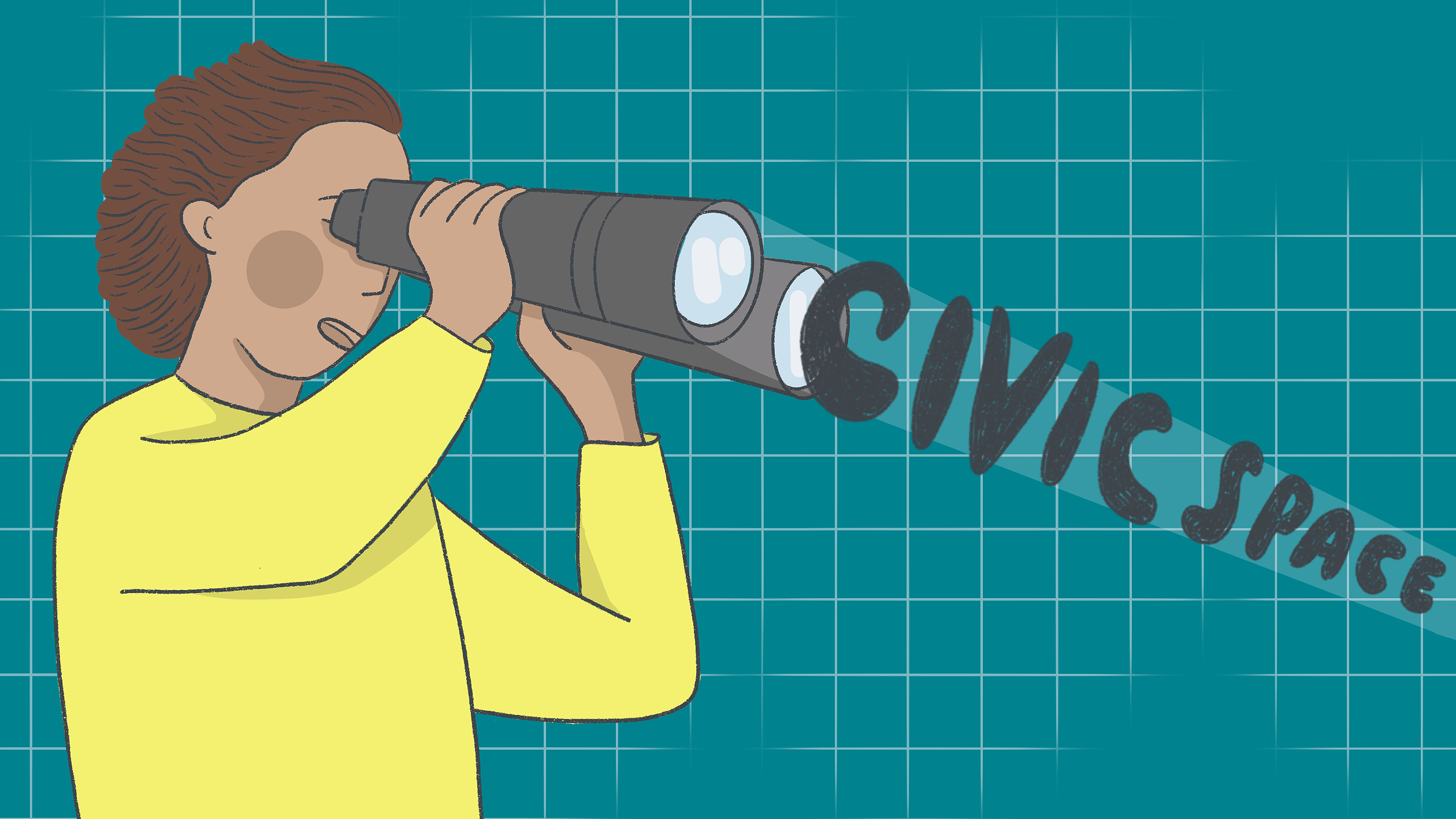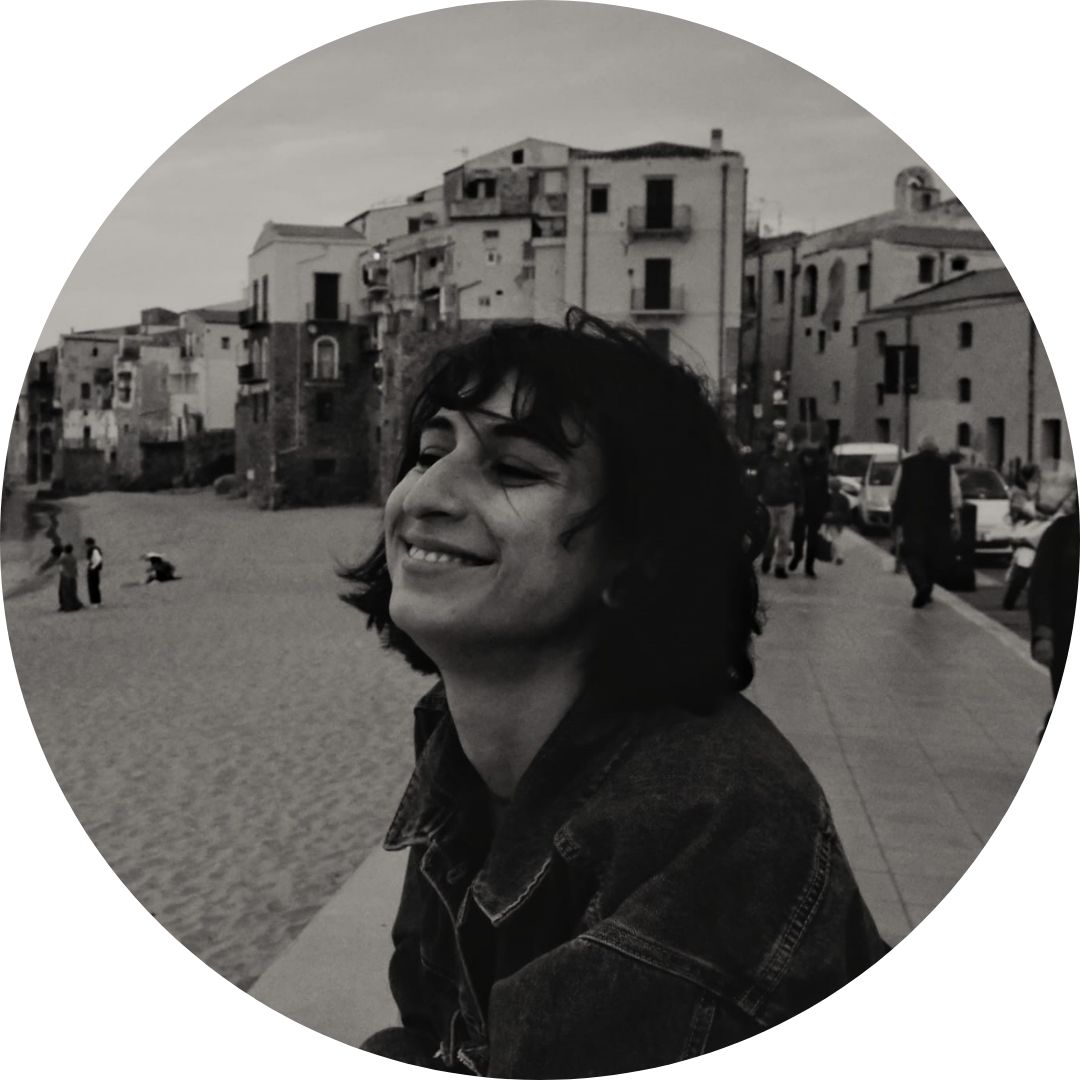
Illustration by Daniela Nunes
Citizenship education in the age of shrinking civic space: building a broader range of the possible
by Gilda Isernia
Between June and August 2024, young Kenyans staged decentralised mass protests against the impending passage of the Financial Bill 2024, backed by the International Monetary Fund (IMF) as part of Kenya’s debt repayment strategy. The bill, intended to address Kenya’s debt crisis through tax reform, faced widespread criticism for its proposed tax increases on fuel and essentials, which many argued would disproportionately affect the poor and informal sector workers.
Dubbed “Gen Z protests” or “#RejectFinanceBill2024”, these demonstrations gained international attention for three reasons. First, the young protesters, aged 18 to 29, mobilised a powerful grass-roots digital campaign, translating the bill into Kenya’s 68 languages. Second, initially peaceful protests were met with excessive police force, escalating into riots that led to 50 deaths and over 700 arrests. Third, after seven and a half weeks of sustained protests, the bill was withdrawn, and President William Ruto promised a tax reform reflecting citizens’ ability to pay.
This policy reversal was a huge win for Kenyan youth, and quite the isolated case in a world where governments are increasingly unfriendly to protesters. While the actions of Kenyan police and army forces were anything but friendly, such a quick and clear-cut backtracking on policy reform in reaction to demonstrations is something unseen in Europe and much of the world. We might see less and less of it in the future, as the right to demonstrate is increasingly regulated by and subjected to government scrutiny. According to leading global watchdogs and human rights organisations such as the Fundamental Rights Agency of the EU and Amnesty International, this is part of a wider trend of shrinking of civic space across the world. Physical, legal and digital space available to citizens, activists and civil society organisations to express their opinions freely, and individually or collectively take steps to influence decision-making processes in their society is decreasing.
Shrinking civic space: an increasingly unfriendly global environment for protesters
Civic space is increasingly monitored in its various dimensions to measure the health, state and quality of governance. International organisations such as the Council of Europe and the Fundamental Rights Agency of the European Union have been warning of the backsliding of democracy and increasing restrictions on civil society to organise and take action. One of the effects of shrinking civic space is that “activists and social justice organizations face an increasingly repressive and securitized environment as well as unprecedented attacks on their legitimacy and security”. The CIVICUS monitor, a global watchdog for civic space, puts together an annual report where it compiles a list of events connected to civil rights such as freedom of expression, freedom of assembly and association. Based on a given country’s performance, safeguard and respect of these rights, it assigns it to a category of either closed, repressed, obstructed, narrowed or open civic space. In the last five years, 10 European countries were downgraded, with four countries in the European Union (EU) downgraded from open to narrowed: Belgium, Cyprus, Germany and Slovenia.
Protests under pressure: Europe 2023-2024
Governments have been impacting the right to protest in two ways: immediate police response and legislative action. These often work together, with legislation shaping how the government responds to protests. Both approaches can limit people’s ability to protest, but in different ways. Police responses might include excessive force, intimidation or targeting protesters, while new laws can limit protest rights by adding administrative obstacles (like extra paperwork) or placing restrictions on the types and ways protests can happen.
The Armed Conflict Location & Event Data (ACLED) initiative collects data on conflict and unrest around the world. From January 2023 to October 2024, there were 57 153 protests in Europe, the majority of which – 93% – were peaceful. Most demonstrations took place in: France (14 540), Germany (8 269), Spain (6 439), Italy (5 784) and Poland (2 498). The non-peaceful protests were coded as follows:
- protest with intervention, disruption or arrest of protesters (1 625 cases);
- violent protests (1 490 cases);
- mob violence (642 cases);
- excessive police force (25 cases).
Environmental and climate protests, and protests against war and conflict, are more likely to encounter restrictions. Restrictions can entail:
- arresting protesters en masse with the goal of ending or disrupting the protests, where the majority of those arrested are immediately released;
- use of repressive tactics such as tear gas, plastic baton rounds and water cannons;
- application of criminal law to protesters’ action, with charges ranging from inciting violence against police authorities to terrorism.
Laws hindering the right to protest and bans on demonstrations have been recorded in at least six European countries in the last five years, with four in EU member states. The restrictive laws either grant more powers to the police, curtail the right to demonstrate in specific instances, or seek to further criminalise protesters for their actions. In Hungary, a bill passed in 2023 and in effect in January 2024 effectively restricts teachers’ right to strike by changing their labour status and subjecting them to arbitrary and temporary removal from their workplaces to remote locations. Another security bill, currently under consideration in Italy, also contains a number of measures that have been widely denounced by international organisations as “anti-Gandhi” laws. This law decree “introduces some 30 amendments to the Criminal Code by formulating 20 new crimes, extending penalties and aggravating factors, and in some cases expanding penalties for already existing crimes: it stipulates that roadblocks become crimes with penalties of up to two years imprisonment, criminalises peaceful protests, with an aggravating factor for those who oppose the construction of major public works, and provides penalties of up to 20 years for those who protest in Detention Centers for Repatriation (CPRs) and prisons”.
Some of the measures above specifically target environmental activists; other restrictions have been imposed on mass protests in solidarity with Palestine and the ongoing conflict in the Gaza strip in at least three EU countries.
What are the generational implications of repressing civic freedoms?
The case of Kenya shows that protests are a type of mobilisation often chosen by young people. This might be because youth is a social group which has limited options to make its voice heard, thus resorting to informal modes of participation: many young people, for example, do not have the right to vote. As activists, their age can be a constraint to action and lead to discrimination. Therefore, any government response or legislation affecting protests is likely to affect young people in various ways. Indeed, one of the most daunting hypotheses in the rich literature on young people’s political participation is that youth attitudes towards politics are shaped at least in part by government action, behaviour and performance over time. In simpler words, this means that the way politics work, or are perceived to work, affects how people feel about it, and how they choose to engage with it; there are, therefore, generational implications of the repression of civic freedoms.
An example of this is how in countries with a legacy of dictatorship and authoritarianism, civic engagement of citizens and organisations is still lower on average than that of historically liberal democracies. Being politically active was never encouraged; on the contrary, it was repressed. This in turn shaped the “range of the possible” or what is perceived to be within reach when it comes to participation, its forms and effects on governance. This is still the case in many countries around the world: demonstrations are not part of people’s political repertoires for the simple reason that they were banned a long time ago. Thus, protecting the right to dissent is protecting the frontlines of a well-functioning democracy, as well as sustaining the “range of the possible” for young people across Europe.
During the Gen Z protests, I was texting a friend who was very active in Nairobi, asking for updates. When news broke that the bill was withdrawn, he wrote to me. “Of course. We can’t destroy our country, but we can strongly reject mediocrity in our country,” he said. Looking back, the policy reversal felt inevitable to him – President Ruto couldn’t have acted differently, and young Kenyans had finally succeeded. It’s uncertain what the government’s next fiscal proposals might be, especially with the risk of financial default still present. But for now, the Gen Z protests united young Kenyans and boosted their confidence because they were effective. In the short term, this success is likely to shape how young Kenyans see themselves as political agents. The protest names, “Gen Z” and “#RejectFinanceBill2024”, highlight a strong generational stand. A generational stand that demands attention, and vehemently rejects mediocrity.
Youth work for democracy: counteracting broad political trends through education
Protecting civic space – and especially the right to protest – is essential to a functioning democracy. Young people, who are often restricted from formal political engagement, rely on these freedoms to make their voices heard. What can be done concretely against the shrinking of civic space and more specifically, to protect the increasingly regulated right to protest? This is a question that can leave us, at times, quite hopeless. After all, governments are those with the mandate and decision-making power to act; only they can put in place mechanisms to ensure their responses and actions are in line with international law and the respect of human rights. Without their positive action, civic space will continue to shrink. The effects of such shrinkage will be particularly catastrophic for young people as they learn to inhabit society as civic and political agents. “Learn” is the key word here: in the research on youth civic space, education is often mentioned as a strategic tool to shape youth attitudes towards politics. There is consensus on its role, but not much on what its contents should be.
Some notable efforts in this regard have been made by institutions (see the Council of Europe’s Framework of Competences for Democratic Culture or UNESCO) bridging formal and non-formal education methods and settings. Yet education does not only happen in designated spaces: young people are learning civic education on the streets, too. On the streets they increasingly find that the values they share and rights that they have in theory are not respected in practice. In this sense, to teach what democracy should look like in an ideal world creates a dangerous gap from reality. While playing, performing or rehearsing democracy can support the development of many skills, it remains a simulation. It is void of consequence, of effect, of responsibility: it is, therefore, quite far from the exercise of a democratic right. Practice, then, becomes another key word. A good place to look for that is student-led organising, as it is inherently linked to education, democracy and participation in a very concrete way. Student unions believe that students should have a say in their education, a bit like citizens should be able to influence decision making. They have their own idea(s) of what should be the contents and modalities of civic education across geographical, cultural and social contexts. They are also experiencing increasing restrictions on their right to demonstrate and dissent. Through their very existence, activities and mobilisations, student unions representing millions of students in Europe are practising democracy, as well as being passive receivers of it. Maybe then, following their lead, democracy is something that can only be taught practically. Maybe the path forward for strengthening civic space lies in empowering young people not only to learn about democracy, but also to experience it in action.
The Gen Z protests in Kenya have reminded the world that youth-led movements can indeed create ripples of change, even in the most restrictive climates. To counteract the ongoing shrinkage of civic space for youth in Europe, there’s a pressing need for greater investment in youth engagement beyond traditional formal and even non-formal education. This includes concrete and meaningful power-sharing initiatives with youth; practice-based, student-led civic education in schools; working together with young people as the preferred way to work for young people; as well as supporting and defending youth-led civic programmes, student unions and grass-root organisations that foster real-world democratic skills and resilience. Young people would then have the space and tools to build a range of the possible based on the here and the now, where they do have (some) collective power. They would experience democracy as not only active, but also as an effective agent of change. And then they will be well equipped to demand attention, and to reject mediocrity when they see it.

Gilda is Interim Head of Staff and Policy Coordinator at OBESSU, with a background in African Studies and Sociolinguistics. She is also a member of the Pool of European Youth Researchers (PEYR).


